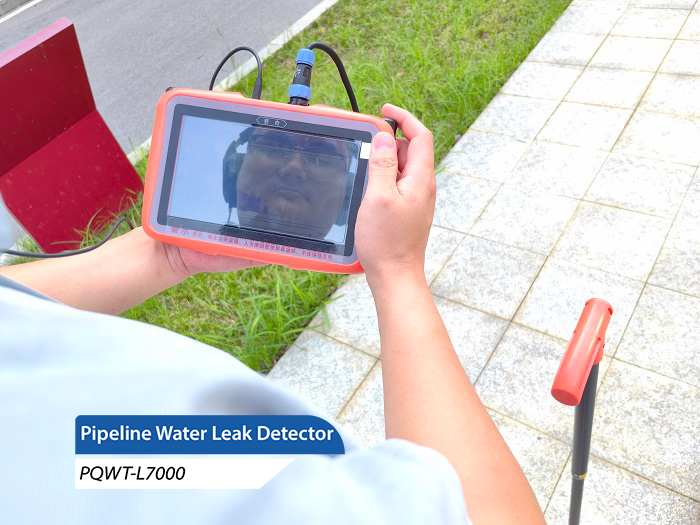In modern urban water supply systems, polyethylene (PE) pipes are widely used in many fields such as municipal water supply, agricultural irrigation, industrial transportation and so on because of their advantages of corrosion resistance, abrasion resistance and good flexibility. However, with the growth of pipeline service life, as well as the role of external environmental factors, PE pipelines are also facing the risk of water leakage, which not only causes a waste of water resources, but also may affect the stability and safety of the water supply system. Therefore, the research and development and application of PE pipe leakage detection instruments are particularly important.

First, the technical innovation: accurate positioning, efficient detection
PE pipe leakage detection instruments use advanced acoustic, optical or electromagnetic principles to achieve accurate detection of internal or external leakage of PE pipes. These instruments quickly locate leaks by capturing sound changes, temperature changes, or electromagnetic field anomalies generated by fluid flow in the pipe, combined with advanced signal processing techniques and algorithms. Compared with traditional manual detection methods, these instruments have higher detection efficiency and accuracy, and can significantly reduce the leakage detection rate and false alarm rate.
Second, easy to operate: intelligent operation, one-button detection
Modern PE pipe leakage detection instrument design focuses on user experience, easy and fast operation. Instruments are usually equipped with an intuitive interface and clear indicators, the user only needs to follow the instructions for simple settings, you can start the detection program. In the detection process, the instrument will automatically carry out data acquisition, processing and analysis, and the results will be displayed to the user in the form of charts or text, greatly reducing the operating difficulty and skill requirements.
Third, high efficiency and energy saving: timely detection, reduce losses
PE pipe leakage not only causes waste of water resources, but also may cause damage to the environment and building facilities around the pipe. By regularly using the PE pipe leakage detection instrument for inspection, the leakage problem can be detected and dealt with in time, effectively curbing the unnecessary loss of water resources and reducing maintenance costs. At the same time, timely repair of leaks can also avoid accelerated aging of the pipeline due to long-term water leakage, extend the service life of the pipeline, improve the stability and safety of the water supply system.
Fourth, strong adaptability: flexible response to a variety of complex environments
PE pipes are usually laid underground or in a variety of complex environments, which puts forward higher requirements for the adaptability and flexibility of water leakage detection instruments. Modern PE pipe leakage detection instruments use a variety of sensors and detection technology, can adapt to different pipe materials, pipe diameter and burial depth, as well as different environmental conditions and working conditions. Whether it is dry sand, wet soil or corrosive media environment, these instruments can work stably and reliably to ensure the accuracy and reliability of the detection results.
Conclusion
In summary, the development and application of PE pipe leakage detection instruments is an important part of the safety management of water supply systems. It provides strong support for the stable operation of the water supply system and the guarantee of public safety with its accurate detection ability, easy operation and efficient energy saving effect. With the continuous progress and popularization of technology, it is believed that such instruments will be widely used in more fields in the future, contributing more to the sustainable development of society.








